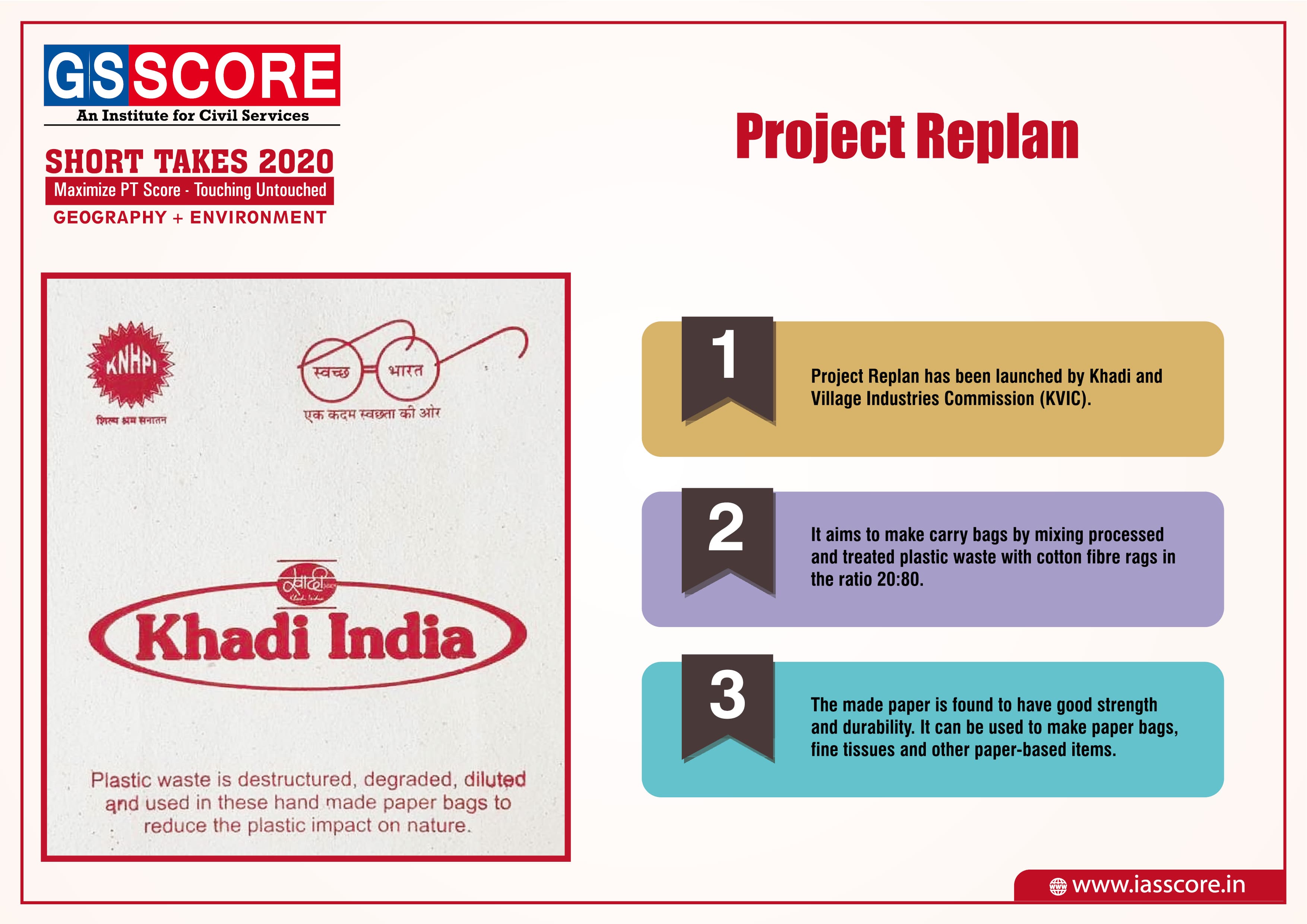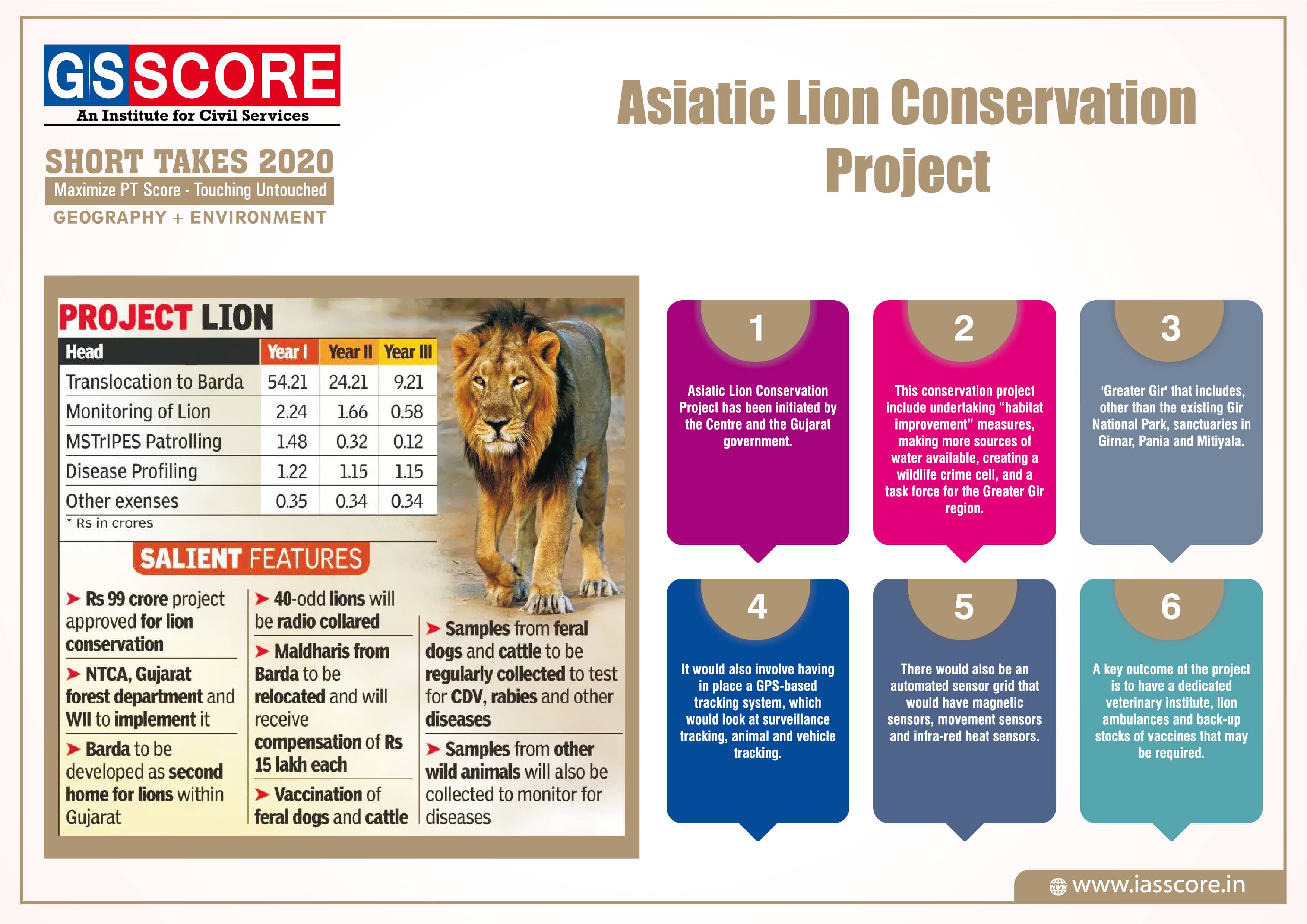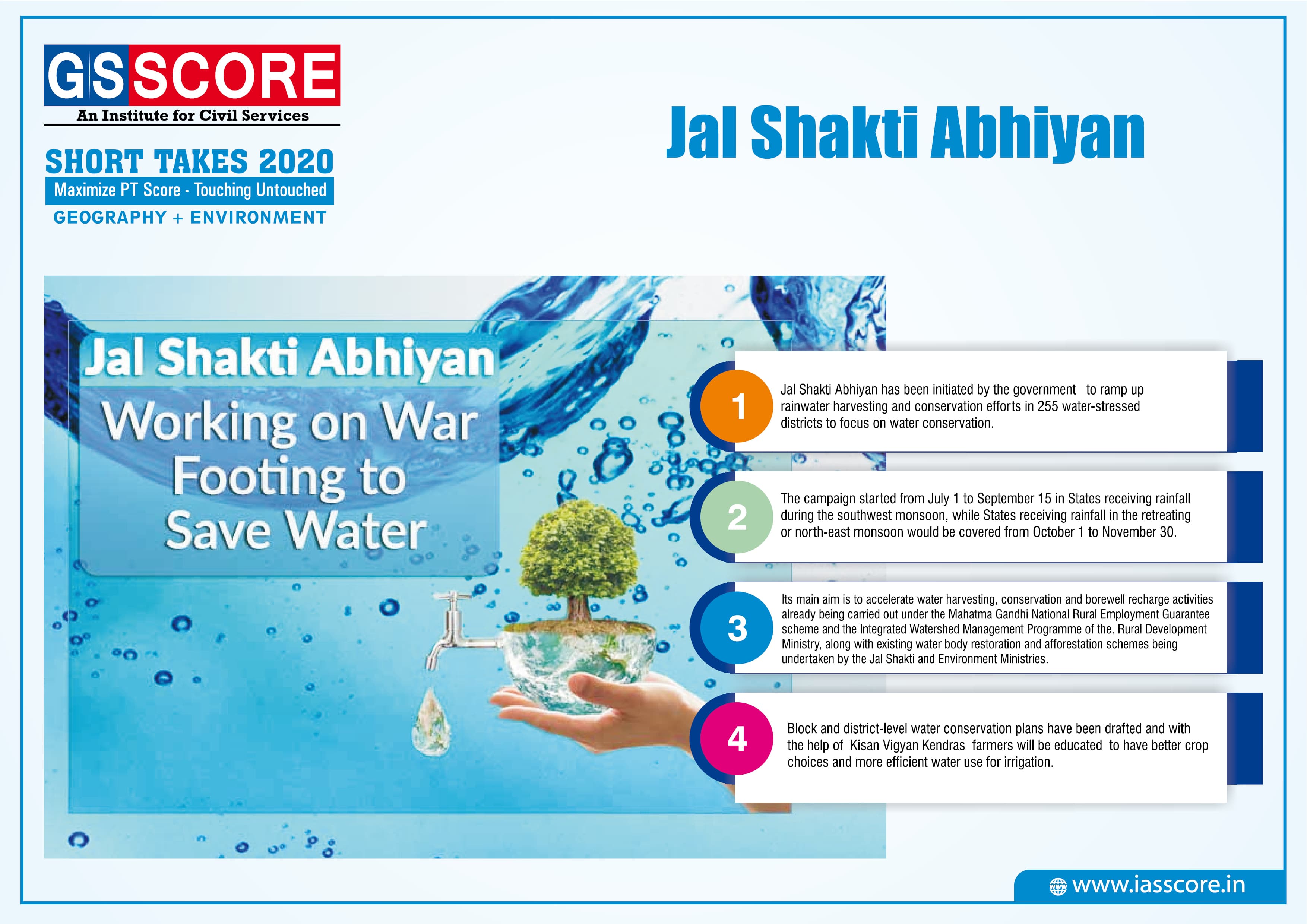Environment & Ecology: Aquatic life zones
Biomes: Aquatic
Aquatic ecosystems are water-based ecosystems. Lakes, ponds, estuaries, saltwater marshes, oceans, and thermal vents are all examples of aquatic ecosystems, but each has different characteristics.
Factors Limiting the Productivity of Aquatic Habitats
1.Sunlight
- Sunlight penetration rapidly diminishes as it passes down the column of water.
- The depth to which light penetrates a lake determines the extent of plant distribution.
- Suspended particulate matters such as clay, silt, phytoplankton, etc. make the water turbid.
- Turbidity limits the extent of light penetration and photosynthetic activity in a significant way.
- Based on light penetration and plant distribution they are classified as photic and aphotic zones
Photic zone
- Photic (or “euphotic”) zone is the portion that extends from the lake surface down to where the light level is 1% of that at the surface. The depth of this zone depends on the transparency of water.
- Photosynthetic activity is confined to the photic zone.
- Both photosynthesis and respiration activity takes place.
Aphotic zone
- The lower layers of the aquatic ecosystems, where light penetration and plant growth are restricted form the aphotic zone (profundal zone).
- Only respiration activity takes place in this zone. The aphotic zone extends from the end of the photic zones to bottom of the lake.
2.Dissolved Oxygen
- In freshwater the average concentration of dissolved oxygen is 10 parts per million by weight.
- This is 150 times lower than the concentration of oxygen in an equivalent volume of air.
- Oxygen enters the aquatic ecosystem through the air-water interface and by the photosynthetic activities of aquatic plants.
- Dissolved oxygen escapes the water body through the air-water interface and respiration of organisms (fish, decomposers, zooplankton, etc.).
- The amount of dissolved oxygen retained in water is also influenced by temperature.
3.Temperature
- Since water temperatures are less subject to change, the aquatic organisms have narrow temperature tolerance limit.
- As a result, even small changes in water temperature are a great threat to the survival of aquatic organism when compared to the changes in air temperatures in the terrestrial organisms.
4.Winterkill
- An ice layer on the top of a water body can effectively cut off light.
- Photosynthesis stops but respiration continues in such water body.
- If the water body is shallow, the oxygen gets depleted, and the fish die. This condition is known as winterkill.
Marine Ecosystem
- Marine ecosystems cover approximately 71% of the Earth’s surface and contain approximately 97% of the planet’s water.
- They generate 32% of the world’s net primary production.
- They are distinguished from freshwater ecosystems by the presence of dissolved compounds, especially salts, in the water.
- Approximately 85% of the dissolved materials in seawater are sodium and chlorine. Seawater has an average salinity of 35 parts per thousand (ppt) of water.
- Actual salinity varies among different marine ecosystems.
- Marine ecosystems can be divided into many zones depending upon water depth and shoreline features:
- The oceanic zone is the vast open part of the ocean where animals such as whales, sharks, and tuna live.
- The benthic zone consists of substrates below water where many invertebrates live.
- The intertidal zone is the area between high and low tides. Other near-shore (neritic) zones can include estuaries, salt marshes, coral reefs, lagoons and mangrove swamps.
- In the deep water, hydrothermal vents may occur where chemosynthetic sulfur bacteria form the base of the food web.
- Aquatic ecosystems perform many important environmental functions. For example, they recycle nutrients, purify water, attenuate foods, recharge ground water and provide habitats for wildlife.

The organisms living in water may be classified into the following types:
- The surface living organisms, which are called as Planktons, whose movements are mostly controlled by the currents. Algae, protozoa, rotifers, copepods and cladocera belong to this group.
- Animals living at the bottom of water bodies are called as Benthos. These are further divided according to the mode of feeding into filter feeders and deposit-feeders (or sediment feeders). Midge larvae, clams and other microscopic organisms thrive as benthos.
- Active swimming forms called as Nektons. Fishes, aquatic insects, water beetles, amphibians, turtles, water snakes, tadpoles of frogs and Tilapia live as nektons.
- Organisms (both plants and animals) attached or clinging to stems and leaves of rooted plants or projected surfaces. These are called as Periphytons. Sessile algae, fungi, protozoa, hydra, microcrustacea, rotifera and snails come under this category.
- The organisms which are resting and swimming on the surface of water are called as Neustons. Insects, mosquito larvae, some bacteria and algae come under this group.
Lotic Ecosystem
- Lotic aquatic systems are those systems which contain flowing waters. The mass of water in these systems is in a state of perpetual motion. Streams and rivers are familiar examples of such systems.
- The basic function of these lotic bodies of water is to carry the surplus rain water back to the sea.
- The major abiotic factors controlling the lotic ecosystems are:
- Slope and geomorphic conditions including the nature of substratum.
- Physico-chemical properties of water. Temperature, color, alkalinity, pH and dissolved oxygen.
- Flow velocity and quantity.
- Type and amount of suspended and bed-load sediments.
- Turbidity
- Thickness of water column and the depth of light penetration.
- The climatological factors like atmospheric temperature, humidity, sun shine hours, evapotranspiration and wind.

Plankton
- The term ‘plankton’ refers to the group of organisms which float in the surface waters of the rivers, lakes and oceans.
- Includes both microscopic plants like algae (phytoplankton) and animals like crustaceans and protozoans (zooplankton) found in all aquatic ecosystems, except certain swift moving waters.
- The locomotory power of the planktons is limited so that their distribution is controlled, largely, by currents in the aquatic ecosystems.
- The growth rate, productivity and species diversity of plankton in tropical waters especially in mangrove waters are high.
Phytoplankton
- Phytoplanktons are microscopic plant organisms that live in aquatic environments, both salty and fresh.
- Some phytoplanktons are bacteria, some are protists, and most are single-called plants. Among the common kinds are cyanobacteria, silica-encased diatoms, dinofiagellates, green algae, and chalk-coated coccolithophores.
- Phytoplankton produce more than 60% of oxygen produced from all plants.
- Like land plants, all phytoplankton have chlorophyll to capture sunlight, and they use photosynthesis to turn it into chemical energy. They consume carbon dioxide, and release oxygen. All phytoplankton photosynthesize, but some get additional energy by consuming other organisms.
- These micro-algae are present throughout the lighted regions of all the seas and oceans including the Polar Regions.
- Their total biomass is many times greater than that of the total plants on land and they serve as the “pasture grounds” in the aquatic environment.
Factors Affecting Phytoplanktons Biodiversity
Light
- Phytoplanktons are limited to the uppermost layers of the ocean where light intensity is sufficient for photosynthesis to take place.
- The photosynthetic rate varies with light intensity.
Nutrients
- The major inorganic nutrients required by phytoplankton for growth and reproduction are nitrogen and phosphorus.
- Diatoms and silicofiagellates also require silicate (SiO2) in significant amounts.
- Some phytoplankton can fix nitrogen and can grow in areas where nitrate concentrations are low.
- They also require trace amounts of iron which limits phytoplankton growth in large areas of the ocean because iron concentrations are very low.
Temperature
- Temperature acts along with other factors in influencing the variation of photosynthetic production.
- Generally, the rate of photosynthesis increases with an increase in temperature, but diminishes sharply after a point is reached.
- Temperature, together with illumination, influences the seasonal variation of phytoplankton production in the temperate latitudes.
Salinity
- Besides light and temperature, salinity also is known to influence primary production.
Grazing by Zooplankton
- The grazing rate of zooplankton is one of the major factors influencing the size of the standing crop of phytoplankton, and thereby the rate of production.
Distribution
- Marine phytoplanktons are not uniformly distributed throughout the oceans of the world. the highest concentrations are found at high latitudes, with the exception of upwelling areas on the continental shelves, while the tropics and subtropics have 10 to 100 times lower concentrations.
- In addition to nutrients, temperature, salinity and light availability; the high levels of exposure to solar UV-B radiation that normally occur within the tropics and subtropics may play a role in phytoplankton distributions.
- Phytoplankton productivity is limited to the euphotic zone, the upper layer of the water column in which there is sufficient sunlight to support net productivity.
- The position of the organisms in the euphotic zone is influenced by the action of wind and waves.
Importance of phytoplankton
The Food Web
- Phytoplankton are the foundation of the aquatic food web, the primary producers, it feeds everything from microscopic animal-like zooplankton to whales.
- Small fish and invertebrates graze on the phytoplanktons, and then those smaller animals are eaten by bigger ones.
Phytoplankton – The Carbon Cycle and Climate Change
- Phytoplanktons are responsible for most of the transfer of carbon dioxide from the atmosphere to the ocean. Carbon dioxide is consumed during photosynthesis, and the carbon is incorporated in the phytoplankton, just as carbon is stored in the wood and leaves of a tree. Most of the carbon is returned to near-surface waters when phytoplanktons are eaten or decompose, but some falls into the ocean depths.
- Worldwide, this “biological carbon pump” transfers about 10 gigatonnes of carbon from the atmosphere to the deep ocean each year. Even small changes in the growth of phytoplankton may affect atmospheric carbon dioxide concentrations, which would feed back to global surface temperatures.
Zooplankton
- Zooplankton play vital role in food web of the food chain, nutrient recycling, and in transfer of organic matter from primary producers to secondary consumers like fishes.
- They are more abundant within mangrove water-ways than in adjacent coastal waters, and a large proportion of the juvenile fish of mangrove habitat are zooplank-tirovous.
- The zooplanktons determine the quantum of fish stock.
- Hence, zooplankton communities, based on their quality and species diversity, are used for assessing the productivity vis-à-vis fishery resource, fertility and health status of the ecosystem. Tiny flagellates, giant jellyfish (>500m)
Sea-grass

- Sea grasses are (angiosperms) marine flowering plants that resemble grass in appearance.
- They produce flowers; have strap-like or oval leaves and a root system.
- They grow in shallow coastal waters with sandy or muddy bottoms and require comparatively calm areas.
- They are the only group of higher plants adapted to life in the salt water.
- Major Sea grass meadows in India occur along the south east coast of Tamil Nadu and in the lagoons of a few Lakshadweep Islands. There are few grass beds around Andaman and Nicobar islands also.
- The rich growth of seagrasses along the Tamil Nadu coast and Lakshadweep islands in mainly due to high salinity, clarity of the water and sandy substratum.
Functions
- Sea grass beds physically help
- To reduce wave and current energy,
- To filter suspended sediments from the water and
- Stabilize bottom sediments to control erosion
- Provides habitat for marine invertebrates and fishes.
- Seagrass beds are widespread in lagoon and in such areas; the population of fish and migratory birds are also higher due to the availability of food and shelter.
- Sea grasses on reef fats and near estuaries are also nutrient sinks, buffering or filtering nutrient and chemical inputs to the marine environment.
Threats to SeaGrass Beds
- Eutrophication, siltation, trawling, coastal engineering constructions and over exploitation for commercial purposes are the major threats for sea grass beds.
Management
- The major seagrass beds should be mapped and areas have to be identified for preservation.
- Dredging should be carried out far away from seagrass beds as siltation/turbidity destroys seagrass beds.
Seaweeds
- Seaweeds are (thalloid plants) macroscopic algae, which mean they have no differentiation of true tissues such as roots, stems and leaves. They have leaf-like appendages.
- Seaweeds, the larger and visible marine plants are found attached to rocks, corals and other submerged strata in the intertidal and shallow sub tidal zones of the sea.
- Seaweeds grow in shallow coastal waters wherever sizable substrata is available. Based on the colour of their pigmentation, sea weeds are broadly classified into different classes such as: Blue-green, Green, Brown, Red etc.
Functions of seaweeds
- Food for marine organism,
- Habitat for fish breeding grounds,
- Source of sediment.
Uses of seaweeds
- Seaweeds are important as food for humans, feed for animals, and fertilizer for plants.
- Seaweeds are used as a drug for goiter treatment, intestinal and stomach disorders.
- Products like agar-agar and alginates, iodine which are of commercial value, are extracted from seaweeds.
- By the biodegradation of seaweeds methane like economically important gases can be produced in large quantities.
- Extracts of some seaweed species show antibacterial activity.
- Seaweeds are also used as the potential indicators of pollution in coastal ecosystem, particularly heavy metal pollution due to their ability to bind and accumulate metals strongly.
Harmful effects of Seaweeds
- Rotting seaweed is a potent source of hydrogen sulfide, a highly toxic gas, and has been implicated in some incidents of apparent hydrogen-sulphide poisoning.
- It can cause vomiting and diarrhea.
India Faces Grave Danger to Soil Biodiversity: WWF
- According to Global Soil Biodiversity Atlas prepared by World Wide Fund for Nature, India’s soil biodiversity is in danger.
- WWF’s risk index for the world shows threat from loss of above ground biodiversity, over grazing, intensive agriculture, nutrient over loading, soil erosion, desertification and climate change.
- India’s high population makes it vulnerable to ecological crisis even though its per capita ecological footprint is less than 1.75 hectares/ person.
- WWF for nature also stated in its report that over exploitation of natural resources and agriculture is the two main factors for loss of biodiversity.
- Soil biodiversity encompasses presence of micro-organisms (Ex Nematodes and tardigrades) and micro fauna (ants, termites and earthworms).
- The findings were part of the bi-annual Living Planet Report of 2018.
- Along with threat to soil biodiversity, threat to pollinators is another major key aspect of the report.
Floods trigger influx of alien fish species in Kerala
Context
- Kerala food released several alien species of fish into water bodies, raising a threat to the endemic aquatic ecosystem and biodiversity.
Threat Analysis
- The foreign ?sh breeds from farms, dams and also aquariums have washed away into rivers after the foods.
- It is assumed that over 20 lakh invasive ?shes were washed away into rivers and other water resources during the food.
- Presence of 11 alien species have been documented, including the alligator gar, gold ?sh, shark cat?sh also known as Malaysian vaala, red-bellied pacu and four alien invasive species namely the East African cat?sh, common carp, tilapia and sucker cat?sh.
- The research team found that the species now abounding in Kerala waters had developed a preference for snails.
- Among others, invasive ?shes feed also on local ?sh breeds. As some invasive ?shes are capable of living in polluted water too, they can affect survival of local ?sh breeds in the water resources.
Mangalajodi Ecotourism Trust
Context
- Mangalajodi Ecotourism Trust in Odisha has won prestigious United Nations World Tourism Organisation (UNWTO) Award for Innovation in Tourism Enterprise at 14th UNWTO Awards ceremony held in Madrid, Spain.
About
Mangalajodi Ecotourism Trust
- It is community owned and managed venture on banks of Chilika Lake in Odisha.
- It has won prestigious United Nations World Tourism Organisation (UNWTO) Award for Innovation in Tourism Enterprise.
- The villagers of Mangalajodi were once associated with poaching of birds near Chilika Lake but now they stand as true defenders of wildlife in the region.
- The change was mainly due to a coordinated effort in implementing an awareness campaign on importance of preserving natural species and benefits associated with wildlife tourism.
- The change has soared numbers of birds from 2000 (during peak unsustainable hunting) to over three lakh in the region.
- Moreover other visible impacts this change has resulted in increasing revenue through ecotourism, sharp fall in poaching incidents and increasing support of villagers.
- The award was given in recognition of Mangalajodi’s business model that is both economically viable and environmentally sustainable based on principles of community ownership and Eco Tourism.
Project Replan

Blue Flag Project

Asiatic Lion Conservation Project

Cheetah Reintroduction Project

Jal Shakti Abhiyan




